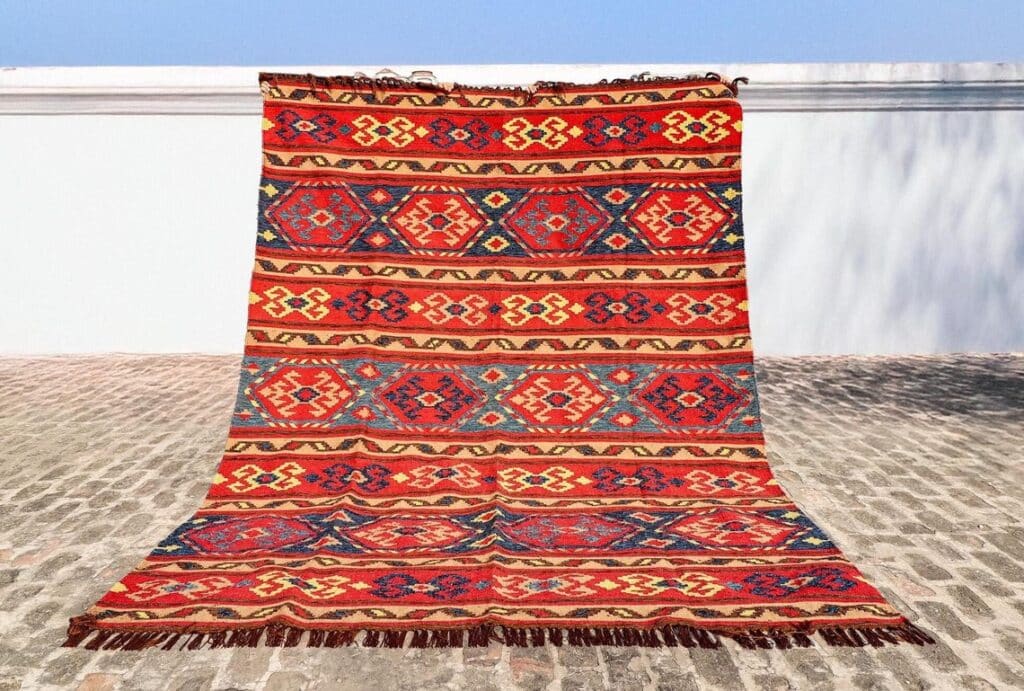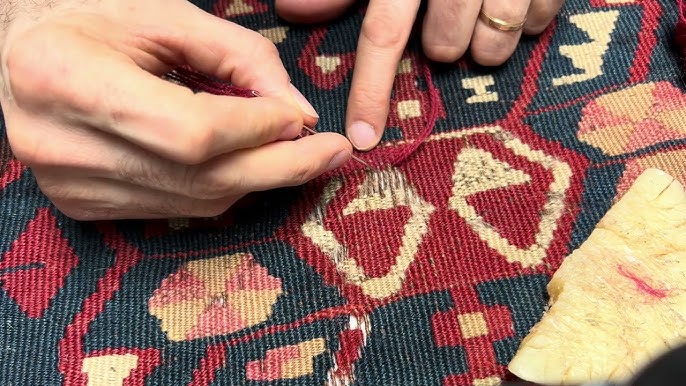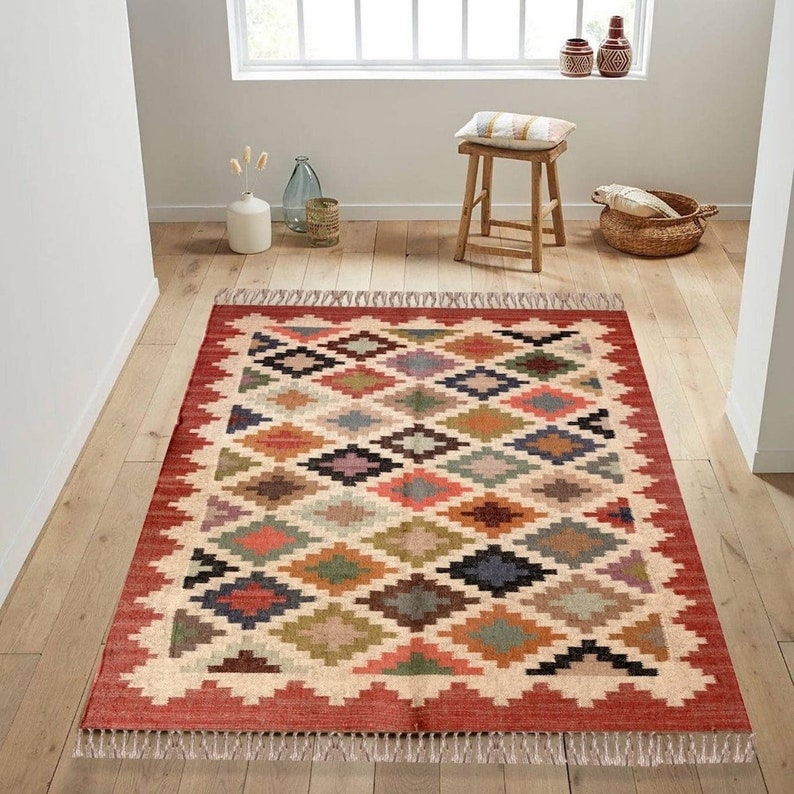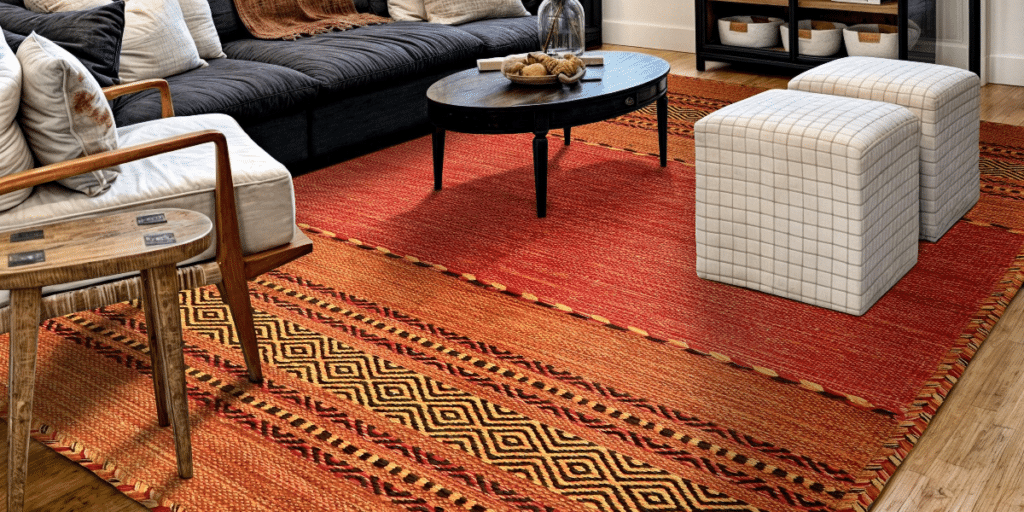Kilim rugs are more than just decorations—they’re art pieces with a rich history, handcrafted to last generations. Whether you’ve just unrolled a new kilim or inherited one that’s been through years of use, caring for it properly can make all the difference in preserving its beauty and value. From flattening stubborn creases to fixing wear and tear, here’s a guide to keeping your kilim rug in top shape.
Flattening a Kilim Rug: Can It Be Ironed?

Imagine unrolling your kilim rug only to find stubborn creases. It’s a common issue, especially with folded or improperly stored rugs. But can you iron a kilim rug to smooth it out? The short answer is yes, but with extreme caution. Kilim rugs are typically made from natural fibers like wool or cotton, and direct heat can damage these materials. Here’s a step-by-step method:
- Lay the Rug Flat: Place the rug on a clean, flat surface. Ensure there’s a protective layer underneath to avoid heat damage to the floor.
- Dampen a Cloth: Lightly dampen a clean cotton cloth or towel and lay it over the creased area. This prevents direct heat contact with the rug.
- Use Low Heat: Set your iron to the lowest heat setting suitable for wool or cotton. Gently press the iron on the damp cloth, moving it in a consistent motion.
- Check Frequently: Lift the cloth periodically to ensure the fibers aren’t overheating.
Expert Tip: “Instead of ironing, try rolling the rug tightly in the opposite direction of the crease and leaving it for a few days,” suggests textile conservator Emma Harper. “This gentler approach often works without risking heat damage.”
Can Kilim Rugs Get Wet?
Yes, kilim rugs can get wet, but it’s not ideal. These rugs are typically made from natural fibers like wool or cotton, which can react poorly to prolonged moisture. When exposed to water, the fibers might shrink, lose their shape, or even develop mildew if not dried properly. If your kilim does get wet, here’s how to manage the situation:
- Act Quickly: Blot the wet area immediately with a clean, dry cloth or paper towel. Avoid rubbing, as this can push the liquid deeper into the fibers.
- Dry Thoroughly: Place the rug in a well-ventilated area. If possible, elevate it to allow air circulation on both sides. Never hang it in direct sunlight, as this can cause colors to fade.
- Seek Professional Help: For large spills or prolonged exposure to water, consult a professional rug cleaner experienced in handling kilims.
Preventative Measures
While kilim rugs can handle occasional wetness, it’s best to minimize their exposure to water:
- Avoid placing kilims in humid areas like bathrooms, kitchens, or basements.
- Use a rug pad to keep the kilim slightly elevated off the floor, which can help prevent moisture from seeping in from below.
- If cleaning is needed, opt for professional dry cleaning or use minimal water with a gentle handwashing technique.
How to Fade a Kilim Rug?

Let’s be honest—sometimes a vibrant kilim rug can feel overpowering in a space. A slightly faded, worn-in look can add character and blend better with your décor. But how do you fade a kilim rug without ruining it?
- Indirect Sunlight: Place the rug in a shaded outdoor space or by a window with filtered sunlight. Rotate it regularly to achieve even fading. Don’t leave it out too long—start with short periods (a couple of hours) and build up gradually.
- Gentle Washing: Wash the rug by hand using a wool-safe detergent. This can soften the colors over time, but be careful not to over-wash, as it can weaken the fibers.
- Professional Help: If you want a more controlled fading process, reach out to a rug specialist. They can use safe techniques to lighten the colors evenly.
A word of caution: never use bleach or harsh chemicals on your kilim. These can strip the fibers and leave the rug looking patchy—or worse, completely ruined.
How to Repair a Kilim Rug?

Repairing a kilim rug depends on the type and extent of damage. For loose threads, carefully weave them back into the rug using a needle and thread that matches the original fibers. If the edges are fraying, use a whip stitch to secure them or consider adding binding tape for extra reinforcement.
Small holes can be patched by sewing a fabric backing to the underside and stitching the edges of the hole to stabilize the area. For larger tears or worn-out sections, professional repair is recommended.
DIY Repairs for Small Issues
- Loose Threads: Spot a loose thread? Resist the urge to pull it! Instead, use a needle and thread to tie it back in place or tuck it neatly into the weave.
- Patch Small Holes: For minor holes, sew a fabric patch underneath the damaged area. Match the patch’s color and texture as closely as possible to keep it discreet.
- Fix Frayed Edges: Use a whip stitch to secure fraying edges. A strong thread in a complementary color can help reinforce these vulnerable spots.
If the damage is extensive—like large holes, worn patterns, or structural issues—reach out to a professional rug repair service. Skilled artisans can reweave damaged sections and restore intricate designs with matching dyes and fibers.
How to Prevent Damage to Your Kilim Rug?

Kilim rugs are delicate yet durable when handled with care. Preventing damage is key to maintaining their beauty and longevity. Here’s how you can keep your kilim rug in excellent condition.
- Avoid High-Traffic Areas: While kilim rugs are sturdy, placing them in areas with constant foot traffic can wear them down faster, especially along the edges. If you want to use them in busier spaces, rotate the rug occasionally to ensure even wear.
- Protect From Moisture: Moisture is one of the biggest enemies of a kilim rug. To avoid this, keep kilims away from damp spaces like bathrooms, basements, or kitchens. If a spill occurs, blot it immediately and ensure the rug dries thoroughly in a well-ventilated area.
- Keep It Away From Direct Sunlight :Direct sunlight can fade the vibrant colors of a kilim rug over time. To prevent this, place your rug in shaded areas or use curtains to filter the sunlight.
- Vacuum Regularly: Dust and dirt can settle into the weave of a kilim rug, causing the fibers to break down over time. Regular vacuuming on a low suction setting (without the beater bar) helps remove debris without pulling at the threads.
- Watch Out for Pests: Moths and carpet beetles can wreak havoc on wool kilims. Inspect your rug regularly for signs of pest activity, like small holes or larvae. To prevent infestations, keep the area around your rug clean and consider occasional professional cleaning to ensure no pests are hiding in the fibers.
Wrap Up

Kilim rugs collection
Explore a diverse collection of rugs crafted for style and durability. From kilims to modern designs, find your perfect rug at Kilim Provenance.
By understanding how to flatten, clean, repair, and protect your kilim rug, you can ensure it remains a centerpiece of your space for years to come. Whether you’re dealing with wrinkles, water damage, fading, or minor repairs, the right techniques and timely interventions make all the difference.
At Kilim Provenance we celebrate the artistry of these handcrafted pieces and believe that caring for them is as much about preserving their function as it is about honoring their history. With the expert advice shared here, you’re equipped to give your kilim rug the care it deserves, keeping it vibrant and full of life for generations to come.


